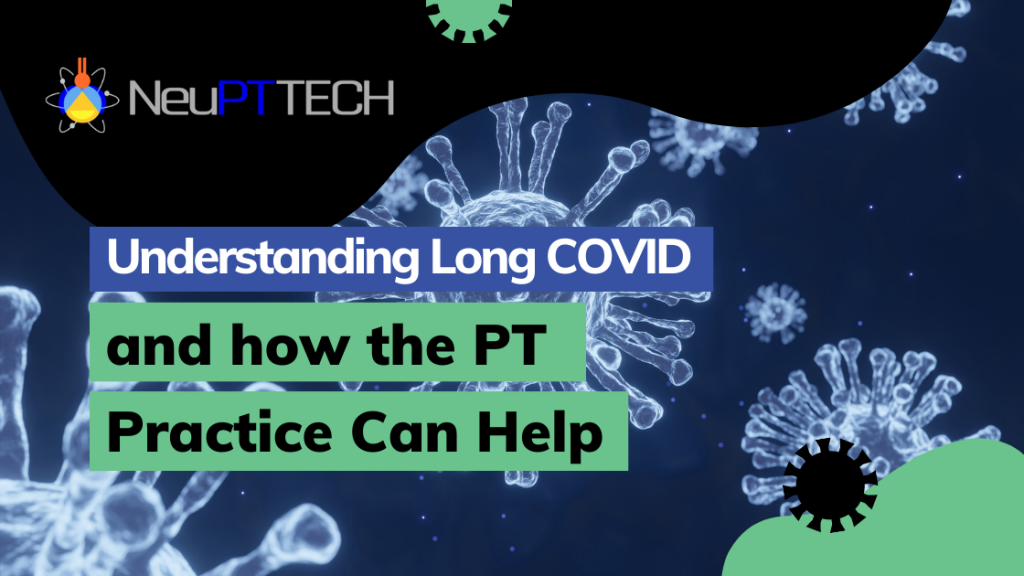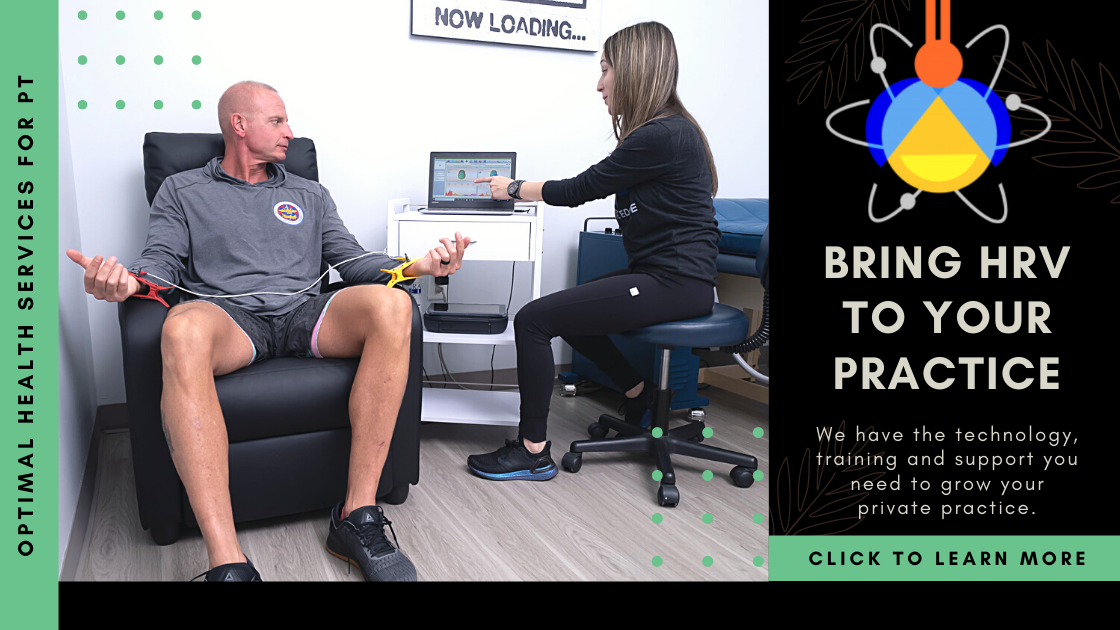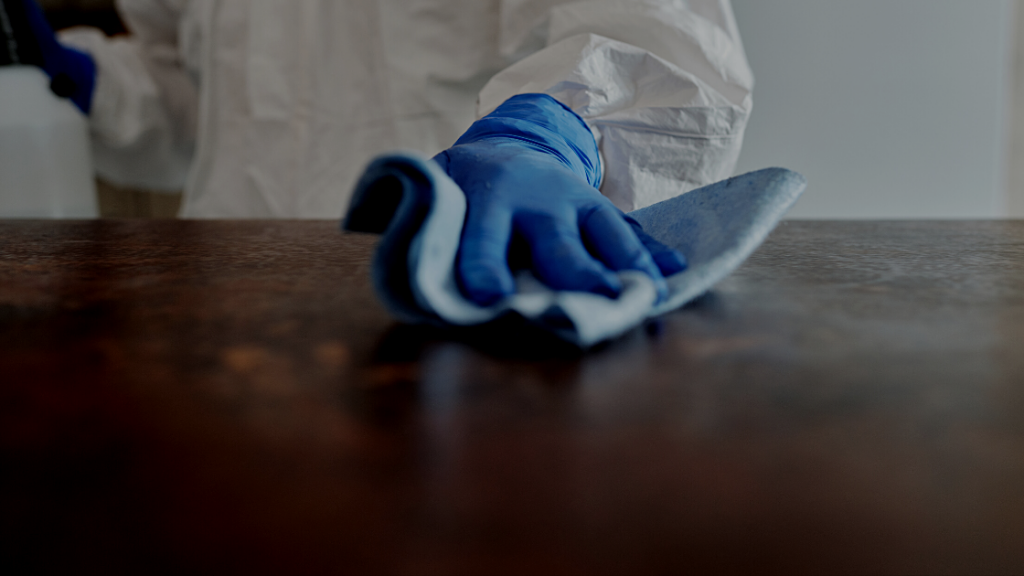
Understanding Long COVID and How the Physical Therapy Practice Can Help
As private practice owners and clinicians, we adapted our operations and programs to keep standing (and even grow) in face of a pandemic. Now, two years later, a new challenge is here.
A growing number of adults who have experienced COVID-19 are beginning to exhibit various, long-term symptoms. This Long COVID problem presents another novel challenge that few know how to diagnose, let alone treat. As we look to the future of clinic care, healthcare providers must be considering how Long COVID care factors into the future of physical therapy?
What do we know about the ongoing role of COVID after the initial wave of illness, and what can private practices do to prepare for longer-term treatment?
NeuPTtech and our partners have been working alongside specialists the last year and have made some great discoveries in how to treat patients with Long COVID. We’ll share our knowledge so far and provide suggestions for physical therapists and clinicians to prepare for this continuing crisis.
What is Long COVID?
Long COVID can be called many things, including Long-Haul COVID, Post-Acute COVID-19, and Chronic COVID.
According to the CDC: “Post-COVID conditions are a wide range of new, returning, or ongoing health problems that people experience after first being infected with the virus that causes COVID-19. Most people with COVID-19 get better within a few days to a few weeks after infection, so at least four weeks after infection is the start of when post-COVID conditions could first be identified. Anyone who was infected can experience post-COVID conditions. Most people with post-COVID conditions experienced symptoms days after their SARS CoV-2 infection when they knew they had COVID-19, but some people with post-COVID conditions did not notice when they first had an infection.”
At this point, little is known about Long COVID, and much information in regards to treatment is still developing. In June 2021, an estimated 700,000 people picked up the symptoms of COVID-19, persisting beyond three weeks. A National Library of Science study suggests that one in ten patients have persisting symptoms of COVID-19 after three weeks, and in some cases, they become chronic, lasting more than 12 weeks. Another recent study from the New York Times suggests that one in five patients develop such long-term symptoms.
Symptoms Related to Long COVID
As for the symptoms associated with Long COVID, they are numerous and disruptive. Some of the many manifestations of Long COVID include:
- Fatigue
- Respiratory Issues
- Lung and Muscle Pain, “lung burn”
- Neurocognitive difficulties, “brain fog”
- Mood swings
- Skin lesions, or “covid toe”
Understanding the Complications of Long COVID
Additionally, COVID-19 may exacerbate or prolong existing conditions and comorbidities. These complications may include cardiac disease, respiratory disease, psychiatric conditions or circulatory issues.
There is even data that indicates that Long COVID can influence impairments such as diabetes, hypertension and various infections. That is not to ignore the psychological and community toll such persistent issues can have on patients and their loved ones.
Such symptoms are also clustered in individuals with severe COVID-19 illness, but such issues are not exclusive to severe cases. It seems that anyone who has been affected by the virus can potentially develop chronic conditions, even if their illness at the time was mild or there were no COVID-19 symptoms. This also means that unvaccinated people are at a higher risk of needing Long COVID care.
How Physical Therapy Can Prepare for Long COVID
You may notice that the most popular of symptoms related to Long COVID are the very same challenges that we have been highlighting when presenting new, innovative physical therapy technology for training and recovery.
This means, to some effect, the solution is already here. Physical therapy practices can treat Long COVID conditions by treating patients from the inside out, noting the apparent scale of the issues and how they can impact patients’ lives long term since post-COVID conditions can include a wide range of ongoing health concerns, lasting for weeks, months, and years.
When it comes to specific symptoms of Long COVID, physical therapy can play a role in treating Long COVID conditions. Because COVID does seem to affect the nervous system, HRV assessments can prove invaluable in maintaining quality care for such patients at a physical therapy practice. The technology exists and has specific, proprietary uses to combat this novel challenge which can keep clinicians from hunting for solutions and start treating their patients.
Long COVID Requires a Heart Rate Variability Assessment
Heart Rate Variability (HRV) Therapy is a form of diagnostics that can help assess the state of a patient’s nervous system. HRV Therapy is non-invasive and takes around 5-minutes, but it provides a wealth of real-time information on a patient’s wellness. An HRV Assessment is based on biofeedback from the heart, which involves multiple bodily processes, including the pulmonary, circulatory and neurological elements.
HRV Therapy is, in a sense, a vital snapshot of what is going on with a patient, and it can be an essential source of information regarding needs for Long COVID care and which evidence-based programs of care should be used.
HRV Therapy Systems Improve Your Clinic’s Long COVID Care
HRV assessment technology carries many benefits for a physical therapy practice and is also quite simple to implement. The NeuPT HRV System can help patients understand how their bodies respond to triggers like those associated with Long COVID.
HRV assessment technology also can help expose links between stress, pain, mood and injuries so it can diagnose symptoms associated with Long-Haul COVID. It can even help identify certain conditions before they happen, especially when it comes to overuse of limbs when physical therapy is involved.
Creating the Clinic of the Future, Together
Primary care providers must keep up on developments in Long COVID to understand and engage with the challenges of this new condition. The need for further training pathways, procedures, protocols and case studies on this ever-changing new reality is paramount for those who provide care at different levels.
Sharing information with other health care providers is also a necessary route going forward. The more information is gathered and shared, the further our collective understanding of how COVID changes continue to grow. Finally, such efforts will help to advocate for necessary care reform that is necessary to combat this critical chapter in the history of world health.
Practitioners can achieve part of this process by arming their practice with assessment tools like HRV to provide valuable insight into treating Long COVID conditions.
Contact NeuPTtech to learn more about Long COVID treatment protocols and order a NeuPT HRV System with insider pricing today!


 Previous Post
Previous Post Next Post
Next Post

